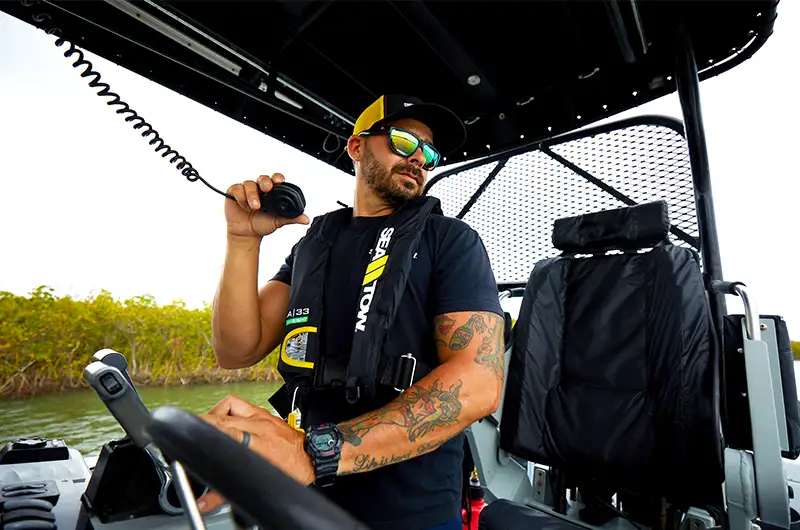
Have you noticed that your VHF radio doesn’t seem to reach as far as it used to? Maybe you used to be able to communicate easily from your favorite fishing hole, but now you’re having a hard time reaching your buddies. Perhaps you’ve recently purchased a brand-new VHF radio thinking it would increase your range, but it hasn’t. If you’ve experienced anything along these lines, it’s time to start thinking about the effectiveness of your VHF antenna.
The phrase “height is king” certainly applies. It’s important to mount your VHF antenna at the highest possible point on your boat. VHF communication is line of sight based, so that means, the higher your antenna, the farther it will reach. A lesser-known fact is that your line of sight not only depends on your antenna’s height, but also the height of the antenna to which you are transmitting.
Variations in antennas are not always obvious at first glance. An antenna with high-quality internal components will yield a greater range and achieve better clarity of reception and transmission. The truth is, your VHF radio is only as good as the antenna to which it is attached. Compare it to the tires on a car. Let’s say you have a high-performance vehicle, but you’ve installed entry-level economy tires on it. Of course, you are not going to get the maximum performance out of your car!
There are four key principles that every boater should understand to ensure optimal antenna performance and extend your VHF communication range to its maximum potential.
- Larger brass or silver plated internal elements on the antenna will be better performers and improve the transmission and reception of your signal.
- Notice the type of coax used with your antenna. All coax cable will increase incremental loss to your VHF system. However, using RG-8X or RG-213 coax will minimize that loss and improve overall performance.
- To maximize the efficiency of your antenna and VHF system, check the connectors used to mate the antenna to the radio. The use of gold plated connectors will minimize signal loss and ensure the best possible transmission.
- Get the highest dB gain that is compatible with your boat type. Talk to your dealer or check out the Antenna Selector on the Shakespeare website to find the right dB for your boat type. As dB increases, the signal is more compressed – like a focused flashlight. A compressed beam can cause the signal to fade in rough seas, especially for smaller boats, as they tend to rock more often.
